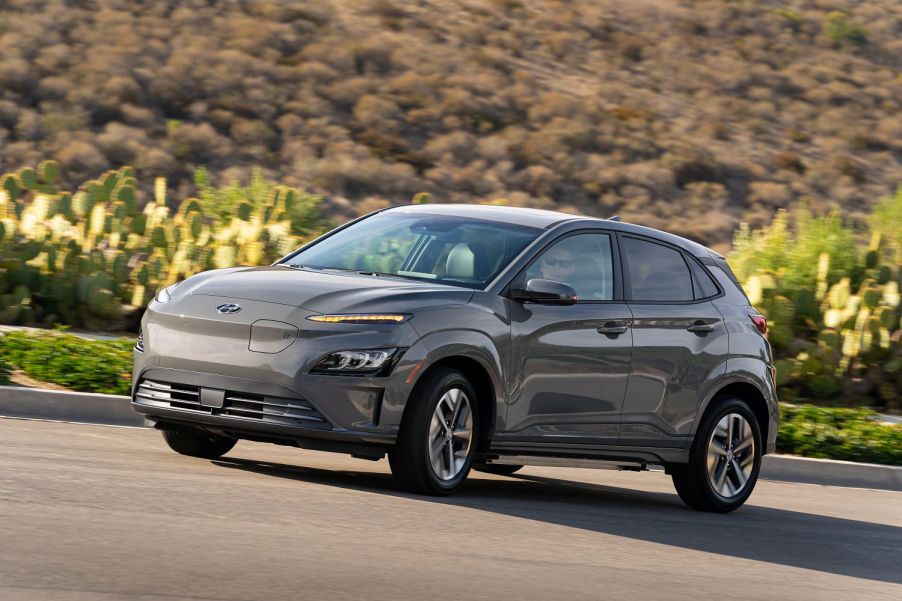
What is the Range of the 2022 Hyundai Kona Electric?
Many automotive consumers are opting for electric vehicles these days. Whether it’s a desire to make a smaller imprint on the planet or to experience something new, the increasing attractiveness of EVs is apparent. Like many other automakers, Hyundai now offers an EV with the Kona Electric subcompact SUV. Along with its pleasing driving dynamics, emissions-free driving, and accessible pricing, the Kona Electric has an impressive range.
Alleviate range anxiety with the 2022 Hyundai Kona Electric

A frequent concern with electric vehicles is range anxiety — or the fear of running out of electric power before you can make it back home or reach a charging station. The Kona electric helps alleviate this concern with its estimated range of 258 miles.
The high range of the Kona Electric can primarily be attributed to its permanent-magnet synchronous motor. It efficiently draws power from a 356-volt lithium-ion polymer battery. Also, the motor more than holds its own for performance, with an output of 201 hp and 291 lb-ft of torque. With its high torque output and near-instantaneous torque delivery, the motor enables the Kona Electric to achieve quick acceleration.
Another thing that helps the range of the Kona Electric is its regenerative braking system. Whenever a driver applies the brakes on the Kona Electric, the kinetic energy that is created by braking is captured and then routed to the battery.
How long does it take to charge the Hyundai Kona Electric?

You can charge the Kona Electric at home or one of the charging stations throughout the United States. The amount of charging stations varies depending on the location that you live in the country. If you charge at home, you can plug the Kona into a standard home outlet. With this method, it takes the Kona Electric to go from a 10% to 100% charge in around 9 hours and 15 minutes. Considering the long at-home charging time, it’s advantageous to charge the Kona Electric overnight, so you’re ready to go on a full charge the following day.
Charging stations provide a considerably faster charging time. With a Level III 50 kW charging station, the Kona Electric can go from a 10% to 80% charge in around 64 minutes. With a Level III 100 kW charging station, it completes the 10% to 80% charge in around 47 minutes.
In cold weather, electric vehicles typically have a lower electric range, for the battery is less efficient when the temperature drops. The Kona Electric addresses this with its battery warmer system, which comes standard for the SEL Convenience and Limited trims.
Electric vehicle advantages of the Hyundai Kona Electric
With its electric powertrain, the Kona Electric offers several advantages. The most obvious is the more negligible negative impact on the environment with its zero emissions. Another is that you don’t have to stop for gasoline. If you have a short daily commute, it’s likely that you’ll rarely have to stop at a charging station, other than for long trips. With its near-instantaneous torque delivery — and high torque output — the Kona Electric can accelerate quickly.
The Kona Electric is easier to maintain compared to gasoline-powered vehicles. It requires no oil changes — and with no engine components, there are fewer things that can break down.
If you live in a larger city, you can skim through congested traffic more quickly, for the Kona Electric enables you to drive solo in an HOV carpool lane. Also, the Kona Electric has financial advantages. If you purchase the Kona Electric, you could be eligible for up to a $7,500 federal tax credit, along with whatever EV tax credit that your home state offers.


